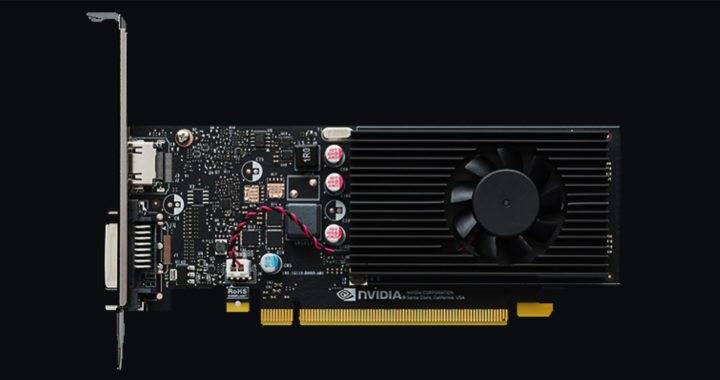The first Nvidia GeForce GT graphics card was introduced in 2018 as part of the GeForce 9 Series of graphics processors. It is designed for desktop computers and marketed specifically as an entry-level line of discrete graphics processing units. Take note that its counterpart is the entry-level Nvidia GeForce MX line designed for thin and light laptops. The Nvidia GeForce GT has now become one of the sub-brands of the main GeForce brand of graphics processors. It is also one of the most popular GPU brands in the world.
Pros of Nvidia GeForce GT: Notable Features and Advantages
Graphics processors are co-processors designed and used to aid central processing units through dedicated processing capabilities and provide an overall performance boost. This is the main principle behind the introduction of the Nvidia GeForce GT line. GPUs under this line are positioned as entry-level hardware components ideal for budget-minded users who want to maximize the capabilities of their desktop PCs without breaking the bank.
It is important to note that this GPU line allows the handling of basic computer gains and other average-level graphical tasks such as basic photo editing and video editing. The inclusion of ports in newer models including DVI ports and HDMI output make them ideal as display adapters for setting up home-theater personal computers. These GPUs also feature and support the most latest and relevant graphics processing technologies.
Below are the specific advantages of the GT line of GPUs:
1. Better Performance
The entry-level GPUs under the GeForce GT sub-brand aim to improve overall user experience through an added performance boost that would not be possible with some integrated graphics processing solutions. These co-processors provide access to several Nvidia drivers and other technologies such as Nvidia GameWorks, Nvidia GPU Boost, and support for Microsoft DirectX.
2. Graphics Processing
Specific capabilities of these GPUs include running high-definition games at 1080p resolution with good frame rates, accomplishing basic video editing tasks ranging from cutting and trimming clips to adding effects and exporting, and performing other graphics-intensive tasks such as three-dimensional modeling, computer-aided design, and photo editing or graphics editing.
3. Affordable Price
Another advantage of the Nvidia GeForce GT is the inexpensive price point of its GPUs. These graphics processors are ideal for budget-minded gamers and other users who need basic graphics performance. The respectable capabilities of these processors provide a gateway for PC gaming and video editing. Note that the GeForce GT GPUs are priced between USD 50.00 and USD 100.00.
4. Expansive Options
There are also different GPUs with different specifications and price points under the line to choose from to cater to the different requirements of entry-level consumers. These include the GeForce GT 1010 and the more capable GeForce GT 1030. It is also worth mentioning that these components are removable to allow easier repair or servicing and upgrading to a newer and better graphics processor.
Cons of Nvidia GeForce GT: Key Issues and Disadvantages
It is important to underscore the fact that the graphics processors under this line are market for entry-level users. One should not expect them to perform as well as mid-range and top-tier graphics processors from the GeForce GTX and GeForce RTX lines or other manufacturers such as the Intel Iris Xe Max from Intel and the integrated Radeon graphics processors found in high-performance AMD Ryzen processors.
There are also several cases in which the integrated GPU Intel Iris Xe found in newer generations of Intel Core processors can perform better than lower-tier and older GeForce GT graphics processors in both benchmark tests and real-world use cases. The arrival of newer process nodes used in systems on a chip such as the ARM-based Apple M Series of processors defeats the purpose of entry-level discrete GPUs.
Below are the specific disadvantages of the GT line of GPUs:
1. Limited Capabilities
These GPUs are not designed for more graphics-intensive tasks. Examples include high-performance gaming, advanced video editing and animation, and prolonged high-level image editing. These graphics processors will struggle and slowdowns and heat generation would be noticeable to users. These tasks would require better and faster GPUs within the mid-range and top-tier categories.
2. Noise Generation
Another notable disadvantage of Nvidia GeForce GT is that its GPUs can generate loud noises from their built-in fans. This happens when desktop computers equipped with a GT graphics processor are used to handle graphics-heavy tasks for an extended period or placed and used in hot environments. The excessive noise might not be ideal for users who are sensitive to loud sounds.
3. Excessive Heat
It is also important to note that processors produce heat. This is the reason that an adequate cooling system is essential. The built-in fan might not be enough to manage heat. This is especially true for tasks that maximize graphics processing capabilities. An adequate cooling system or heat management is necessary to avoid overheating and damage to hardware components.
4. Compatibility Issues
Nvidia GeForce GT graphics processors might not be usable in some computer systems or built. Some motherboards are not compatible with discrete graphics processors due to the absence of essential ports or slots while other desktop PC built do not have adequate cooling systems or enough power source needed to run standalone co-processors such as a discrete GPU.

